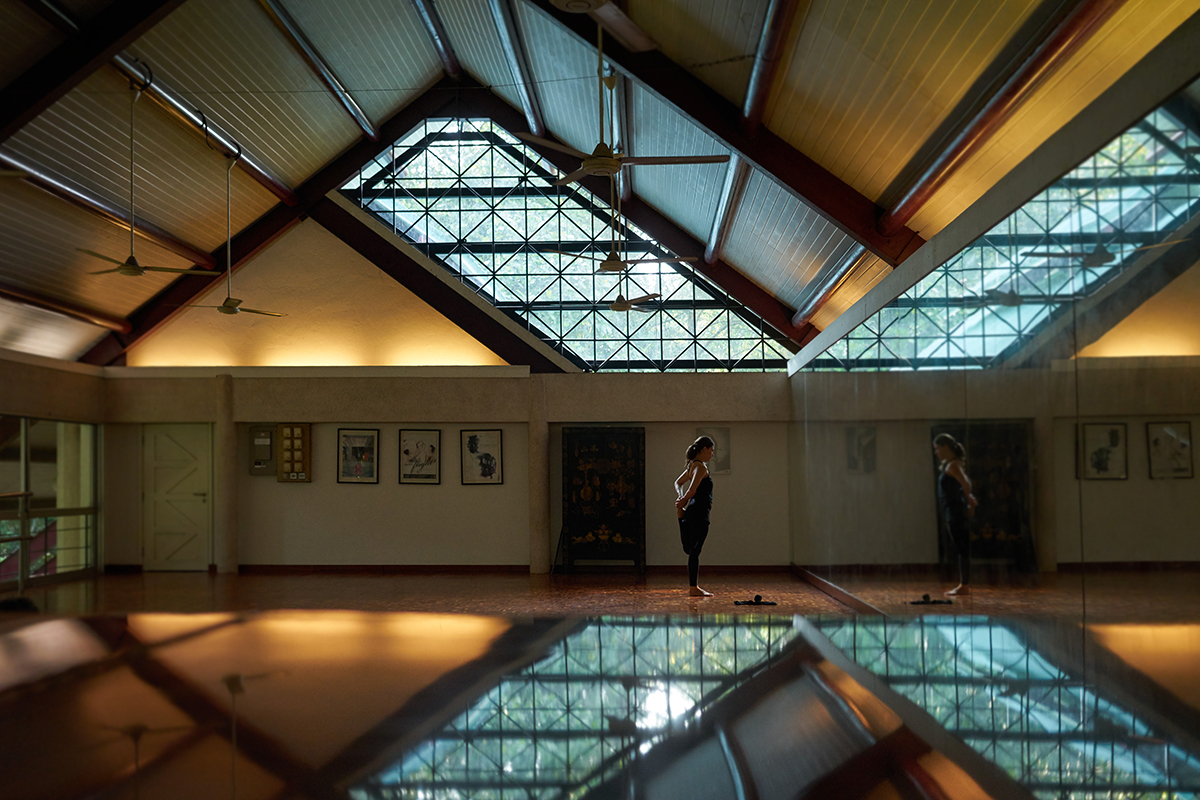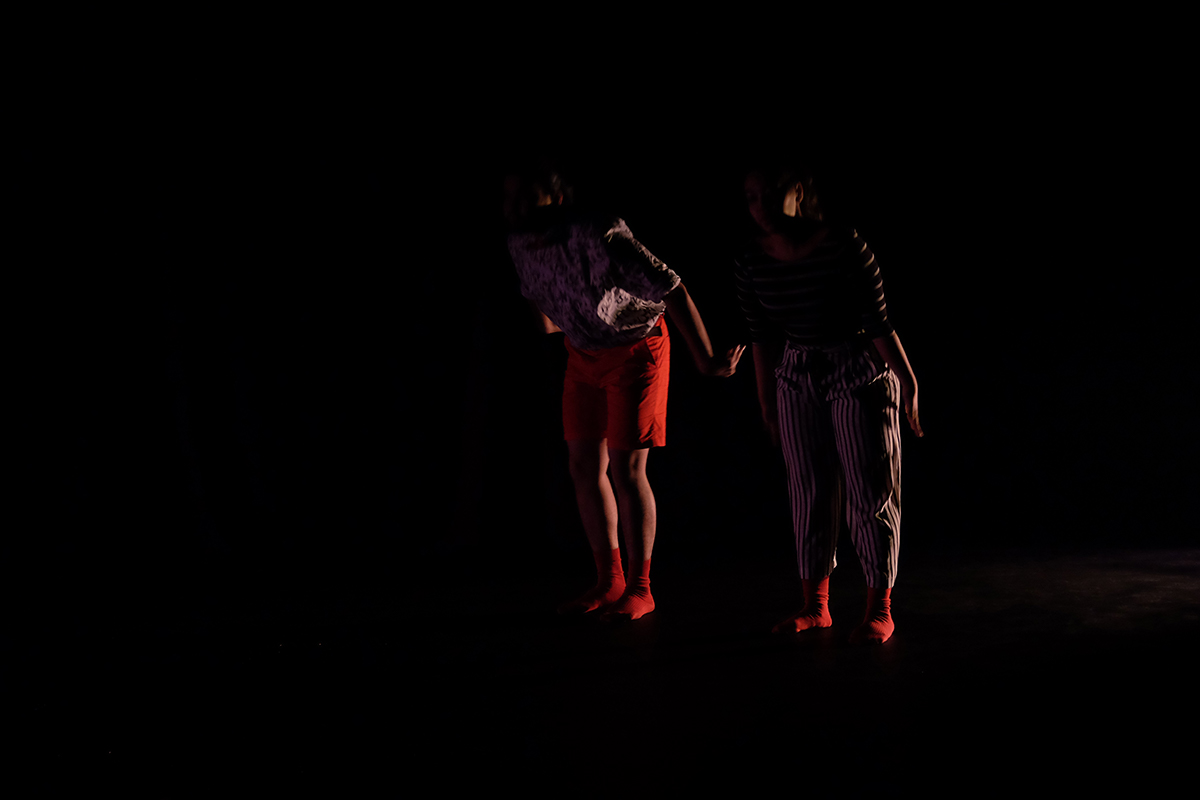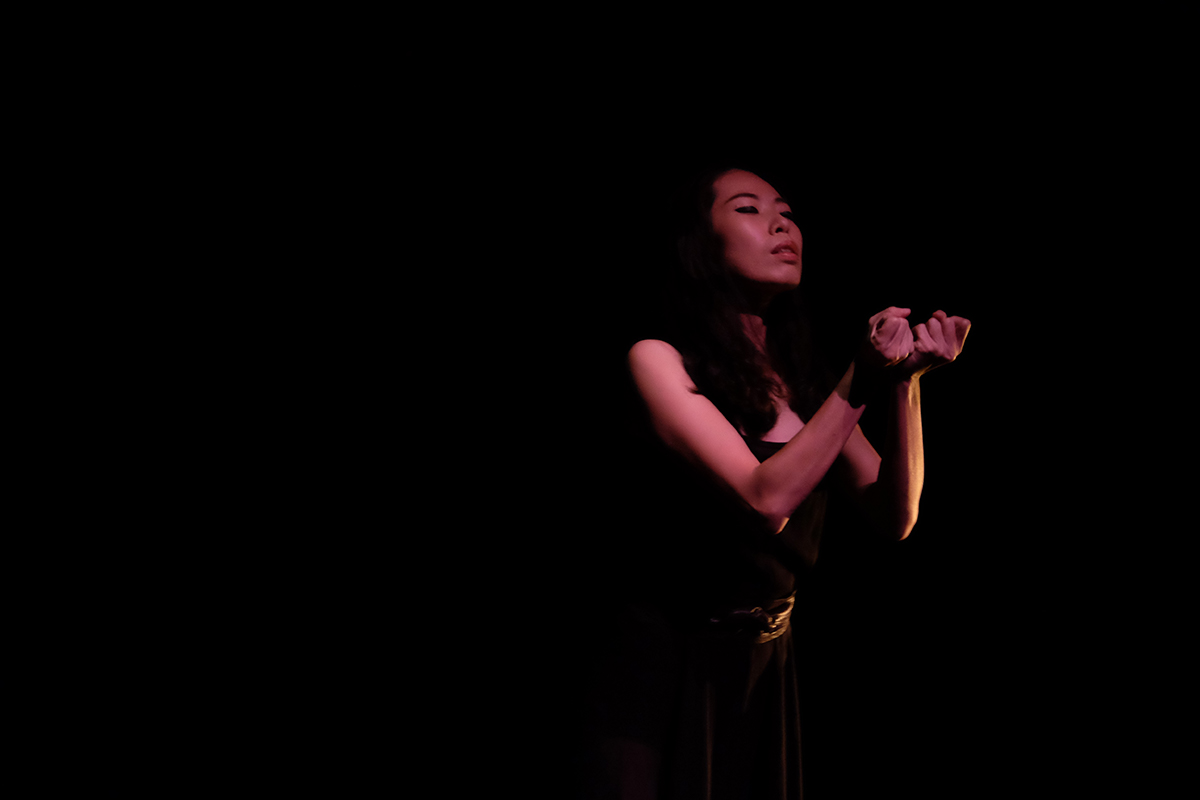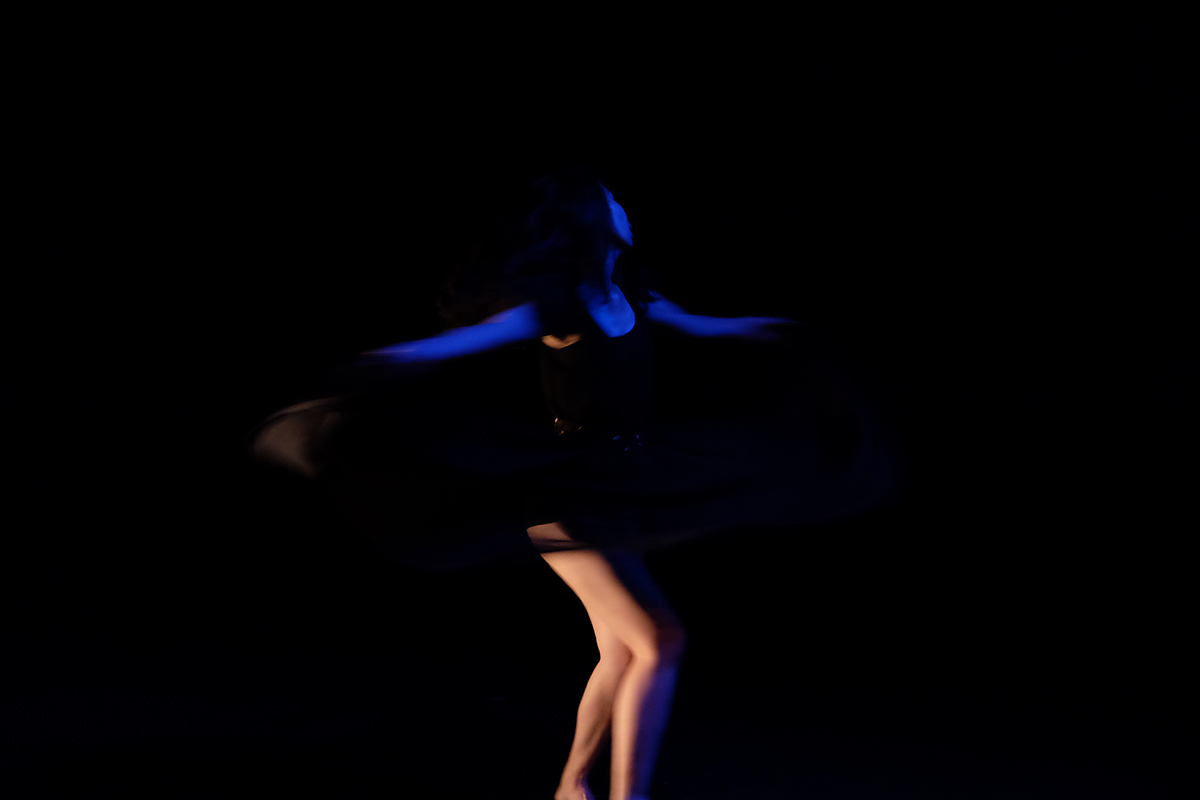New Zealander Lucy Marinkovich reflects on her collaborative choreographic methods in two pieces for Penang Dance Day 2016.
What interests me most as a choreographer are the artists I work with. Flashy, aerobic moves don’t hold much artistic interest for me; the process of enabling dancers to generate individual movement phrases is what gets me excited. This creative interest characterises my choreographic process, and in this article, I will explain some of the movement tasks or provocations used recently while working with local dancers in Kuala Lumpur.
When I first began to choreograph at the New Zealand School of Dance during my final year as a student, I would teach significant amounts of my phrase material to dancers. I felt that this would make my voice apparent within the work and that it would make the choreography mine in some way. However, seven years later, my process has changed substantially and my desire to claim artistic ownership has all but abated. These adjustments reflect the want to engage with others whom I feel privileged to share the studio and create with, and my growing need to work in collaboration with other artists—dancers, musicians, filmmakers, or dramaturges. By proposing tasks or provocations for artists to translate into movement, the choreographic language becomes more complex, and subsequently, far more meaningful and relevant because the movement vocabulary represents the collective voice. Though I expect my relationship and perspectives on creation to continue to change throughout my career, this approach is what currently inspires me.
On March 2016, I left New Zealand to undertake two choreographic residencies in South East Asia supported by Creative New Zealand and the Asia New Zealand Foundation. The first was to attend an artist-in-residence program in Singapore at INSTINC Art Gallery, followed by a choreographic residency at Rimbun Dahan, a residency facility located on the outskirts of Kuala Lumpur. Soon after arriving in Malaysia, I was invited to contribute to a new contemporary dance work for the Impulse to Dance showcase at the Penang Dance Day Festival, facilitated by Aida Redza and Hock Keng. With the help of Bilqis Hijjas, curator of Rimbun Dahan’s dance residency, we contacted local dancers who might be interested in working together and who had the technical abilities to devise dance material. The dancers accepted were Mamad Hj Samsudin and Amellia Feroz, who were to devise and perform in the duet work “The Cabinet”, and Yeow Lai Chee, who was to perform the structured improvisation solo piece “Nomad”.
For this creative process, I began from the basic concept of curiosity. I was in Malaysia, a country I had never visited before, and had a lot of questions about it as a place, its society, and its people. I didn’t want to make assumptions or statements about a culture I wasn’t familiar with, so I began to devise creative methods that would allow me to explore the feeling of fascination without fetishising Malaysian culture or the dancers.
I began by abstracting the idea of curiosity as a fundamental facet of the human temperament. We researched extreme examples of human fascination, such as curios, novelties, and museums, which I consider to be sites of knowledge and curiosity. This research led to searches for Victorian curiosity cabinets, vaudeville performers, circus personalities, and travelling exhibitions of human oddities. Due to the short timeframe, I made a conscious decision to explore these performance personalities within the terrain of contemporary dance, and to set the work to a preexisting piece of music by New Zealand composer Lucien Johnson. The following are some of the key tasks I used with Mamad and Amellia.
The Questionnaire
The Questionnaire is a task I often use when I begin a process with artists I am unfamiliar with. I would propose the questionnaire as a platform for us to share as individuals the things we are interested in, and also as a playful way of introducing ourselves to each other. It is a valuable tool in connecting the participants of a process together outside of our common interest in dance, just as it is similarly important for dancers to remember that we, as artists, are interesting not just because of our technical prowess, but because of all the experiences that inform our personality, history, and perceptions. And I would always read the questions aloud to the group whilst simultaneously participating by writing down my own answers to be shared at the end.
Example of a question:
|
If you could go to one of the following museums, which would it be? – The Dog Collar Museum, England |
Some of the rules I like to impose are as follows:
- Language: The questionnaire can be completed in the dancers’ own language, personal method of shorthand, or even drawing.
- Privacy: The author does not need to share any or all of their answers if they do not wish to.
- Choice: The dancers do not have to provide an answer if they do not feel comfortable with disclosing it.
These “rules” are simple ways of providing a feeling of safety for any dancer that might feel vulnerable, for whatever reason, about participating. The first few questions are a simple collection of personal data (name, age, nationality), before moving on to open-ended questions about individual preferences in music, food, films, books, and then broader topics that require more thought or personal reactions. In working with Mamad and Amellia, I further added multiple choice questions about travelling, other cultures, circus characters, and eccentrically themed museums. The questions are designed to be either fun or informative and as they are read aloud, the participants would often laugh or contribute personal anecdotes. Even though the provided answers are what become utilised as a source for choreographic material, I consider these social reactions as the successful outcome of the task.
The Box
This method of devising movement was taught to me whilst I was a student at the New Zealand School of Dance, passed on as an adaptation of a Rudolph Laban technique for creating new dance vocabulary. It is a system of coordinates that directs the dancer to move in a specific direction from a physical point of initiation.
The instructions are as follows:
- Each dancer must write their own set of directions.
- We begin by listing the alphabet down one side of their page.
- As a collective, we then call out body partsthat each dancer writes down as random letters on their own page.
- Each person should then have an alphabet with corresponding physical parts.
- The following grid must be drawn by each dancer.

- The grid is essentially a bird’s-eye view of an imaginary box around each dancer. The smallest square is the ground level, the middle square reaches eye level, and the tallest square is roof height. The only two letters outside of the grid represent the floor directly beneath the dancer (Y) and the ceiling above their head (Z).
- Each dancer then chooses (or is perhaps given) a few key thematic words, or a phrase of text related to the choreographic concept, and to use the grid and coordinates to translate them into movement vocabulary.
- Dancers work individually to generate a phrase of movement that depicts their given text.
I like to ask for suggestions for body parts so that everyone would be contributing to the outcome of the task. It is often helpful to remind the group that large and small body parts are both excellent suggestions, and that offering both generalised (simply ‘leg’) or specific (‘posterior side of the right ear lobe’) descriptions are equally valid and provide interesting results. Regarding the selection of the words or phrases that movements are initiated from, I consider it important to link them to the choreography’s theme so that the task is related and integrated into the wider process. Though dancers can have different individual texts, it is also possible to give the entire group the same words and letter-body part coordinates to work from. Though dancers will interpret them differently due to individuality, physical capacity, and artistic idiosyncrasies, they will bear a coherence or similarity of direction and intent.
For “The Cabinet”, the words selected by the dancers came from their own questionnaire answers. The dancers were instructed to select a certain number of words that appealed to them; perhaps they liked what the words represented, or the way they looked or sounded. It was also the first movement-based provocation I gave them so that there would be no sense of failure and little chance for self-censorship. Whenever I work as a dancer with a new choreographer, I often feel on the edge that they will not like my offering, but in this exercise, completing the task means following the coordinates, and so the pressure to impress is essentially taken off. However, personality and individual style are always present in the way bodies are coordinated. For example, Mamad displayed his interest in using articulate gestural movements in hands, fingers and wrists, whereas Lai Chee demonstrated an amazing intensity through movement that was both clear and precise, while Amellia’s technical ability for extensions and flowing movement were apparent from the minute she began moving.
I have explained these two tasks in their most basic forms. They can be adapted for various creative processes and can serve as effective tools for generating movement vocabulary. Thereafter, movements can be edited, deleted, and shaped with traditional choreographic tools. I would never simply cut and paste movement generated from these tasks straight into the final choreography. After raw material is created, it passes through stylistic filters such as form, texture, spatial arrangement, directional alignment, musical phrasing, pacing, characterisation and performance quality, which transform the basic phrases into content for choreography. I have come to perceive that within my own practice, defined by collaboration, it is through this process of editing, refining, and crafting movement material that my choreographic voice becomes apparent.
 Lucy Marinkovich is a New Zealand contemporary dancer, choreographer, and the founder of the multi-disciplinary performance collective Borderline Arts Ensemble. More
Lucy Marinkovich is a New Zealand contemporary dancer, choreographer, and the founder of the multi-disciplinary performance collective Borderline Arts Ensemble. More
To contact the author:
borderlineartsensemble@gmail.com
Featured photo: Lucy Marinkovich, Rimbun Dahan, Kuang, 2 June 2016. Photo © 90Seconds



